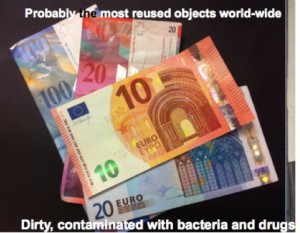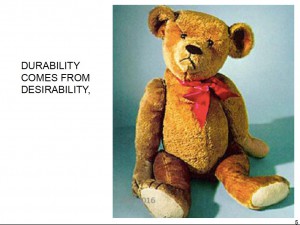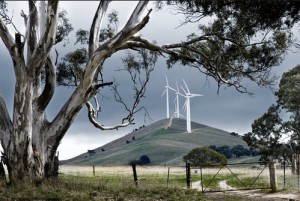Background
In December 2014, irish environment magazine covered the annual conference of the European Environmental Bureau (EEB), which happened also to be the 40th anniversary of the EEB. It also happened at about the same time as a new European Commission (EC) under Jean-Claude Juncker assumed office. Juncker wasted no time in declaring that his administration would be most interested in deregulation, and he committed to completing the pending review of the Clean Air and Circular Economy packages. He went further and instructed his new Vice President Frans Timmermans to conduct a “Fitness Check” or “Fit for Purpose” assessment of the existing Birds and Habitats Directives, the cornerstone of the European Union’s (EU) protection of nature.
That earlier EEB conference was abuzz, and it was not a happy buzz, with what the Juncker Commission intended. An appearance at the EEB conference by the Environment Minister Vella only heightened concerns. While EEB titled its conference, “Europe at the Crossroads,” we characterized it as “European Environmentalism at a Crossroad, or Is it Really a Roadblock.”
We returned in September 2016 to cover the EEB annual conference, held for the first time outside Brussels. It was held in Vienna, which accounted for the large contingency of Austrian environmentalists as well as many from nearby countries, including Slovakia, which then held the EU presidency.
We wanted to see how the EEB was assessing the first two years of Juncker’s Commission. As it turned out, other events had intervened.
The Program
In the year from September 2015, major strides were taken forward with international agreements over the UN Sustainable Development Goals (SDGs) — a set of goals to end poverty, protect the planet, and ensure prosperity for all — and the Paris climate change deal, with China and the US joining forces. We also witnessed significant technological advances, especially in renewable energy. The internet continued to expand our knowledge and connections, although not always with beneficial effects. And we’re still trying to figure out what “social media” means and does.
No wonder the 2016 EEB conference had an optimistic title, ‘From Sustainability Talk to Policy Walk: Stepping up EU action on climate, biodiversity and circular economy.” The intent was to focus on what was necessary to implement and solidify the important recent advances, especially the SDGs and Paris climate deal.
Unfortunately more depressing events overcame whatever optimism might have otherwise prevailed. Much of the discussion, at least at the first plenary session on “Overcoming the Political Obstacles to a Sustainable Europe,” was about the on-going socio-political crises of an austerity budget (Greece), refugees and anti-immigrants, Brexit, and terrorism. A number of speakers referred to how these crises were raising deep concerns about identity nationalism, populism, borders, and reactionary politics as movements that are often contrary to proactive environmentalism. The real concern was that when the socio-economic structures are collapsing, who will care about air and water pollution, or climate changes affecting life 50-100 years from now, and sustainability will be seen as a burden not an opportunity or absolute necessity. These events, not environmental protection, were setting the priorities across the EU. Gabriela Fisscherova, in the Ministry of Environment, Slovak Republic, then holding the Presidency the EU, pointed out that its agenda had to be changed to address these pressing crises instead of environmental or other issues. She also noted that in countries with armed conflict, economic crisis, and long breadlines, sustainability was often ignored.
An interesting variation on the future role of Europe was offered by Ann Mettler, head of an European Commission think-tank, European Political Strategy Center, that advises President Juncker. She applauded the SDGs, approved by all 193 UN Member States; the Paris climate agreement, which apparently has been ratified faster than any other global agreement; the EU greenhouse gas (GHG) targets for 2021-2030; and, adoption of the Circular Economy Package. Yet she went on to point out that the EU leadership in environmental issues would soon lose much of its prominence based on simple demographics. She noted that the EU percentage of the world’s population in 1990 was 25.5%, in 2016 it is 8.9%, and by 2050 it will be 5%. Mettler rightly asked, Why should EU values dominate in such a world? And in this EU world at present, youth unemployment is quite high, with as much as 43 – 50% youth unemployment in Croatia, Spain and Greece. Moreover, while the EU population will grow some, it is an aging population with significant adverse impacts on government pensions and with fewer workers supporting more retirees. Europe will continue to face crises of its own making.
At one point Mettler urged the audience of environmental Non-Governmental Organisations (eNGOs) to get behind the EU Commission to support its efforts to overcome many of these problems, because they were preventing other actions, like environmental protection. In the Question & Answer period, Jeremy Wates, the EEB Secretary General, wondered why the eNGOs were being called on to support President Juncker’s agenda when Juncker barely mentioned any environmental issue in his State of the Union address and had not in the two years ever met with the eNGOs. Mettler replied that Wates, with whom she at least had met, had complained that the prior State of the Union had also ignored the environment. One could suppose Mettler meant to imply that Wates is always complaining or never satisfied, but it also provides evidence that Juncker’s non-treatment of environmental issues is a pattern. And why should Wates be complacent?
During this first plenary session, Benedek Jávor, MEP and member of the Green/European Free Alliance, focused on a topic that does not get the attention it deserves in EU circles, the issue of enforcement. Jávor argued that while laws and regulations exist that can support enforcement, there seems to be little political will within the EC to take proactive enforcement. Most investigations by the EC are based on complaints from private parties who document an infringement or violation, in the nature of whistle-blowing, because national governments ignore the problems.
Since the EC has limited legal and investigative tools, or staff, and perhaps very little political will, to monitor individual countries or even to prosecute those cases brought to its attention, Jávor urges more avenues for individual citizens and/or eNGOs to pursue enforcement when environmental laws are broken or ignored. It is this aspect of the environmental movement in the EU that contrasts so sharply, and poorly, with the US where there are multiple layers of enforcement agencies, with significant resources and legal authority, at local, state and federal levels.
The second plenary session, “Translating Sustainability Principles into Concrete policies,” was hosted by the Austrian journalist/broadcaster Rosa Lyon, and looked at the three themes: climate change, biodiversity and circular economy. The first two presentations tended to generally review where we stand now and what needs to be done to move forward.
The third presentation was on the Circular Economy which often can attract very abstract talks. After all, it is about economics and waste. But here Walter R. Stahel, Founder-Director of The Product-Life Institute, was concise and concrete, with a wealth of very specific, sometimes unusual, sometimes funny, examples of how a circular economy does and can operate. It was a most engaging talk.
Stahel explained that a Circular Economy is confusing to most economists because they believe in maximizing supply chains and adding value along the way, whereas a Circular Economy is about managing stocks, capitals, resources, and preserving their values, not adding to it. As he pointed out, nature does not waste but reuses everything. Only people create waste by making, using and disposing of objects.
This conceptualization was followed by examples that gave us a clear sense of what all this meant in real terms, and how we already participate in a Circular Economy, or can adapt to one with ease. For example, monetary currencies — €s, £s, $s — are continually reused, bought and sold, and may be the most re-used objects in the world and they are often covered with bacteria, yet we trust their value. Or there is the child’s teddy bear which few would dare throw away. And with cars we can choose to sell them after 5 years or keep repairing them over our life time. Of course if collectively we choose to keep repairing our cars we will need local car repair shops, but that’s ok since they will provide jobs for manual labor and income for the local economy. Then there is the wonderfully simple example of the toothbrush. Designing and manufacturing toothbrushes so that only the brush itself, and not the handle, has to be replaced saves 90% of the investment in the toothbrush.
As reported by Stahel, studies show that doubling the service-life of goods (e.g., cars) cuts in half the consumption of resources in manufacturing the goods, and cuts in half the waste volumes for these goods. In addition, a Club of Rome study of seven EU countries demonstrated that shifting to a Circular Economy would reduce each nation’s greenhouse gas (GHG) emissions by up to 70% and increase its workforce by 4%.
Stahel ended by urging tax policies that do not tax renewable resources, which includes human labor, on which the Circular Economy depends. Instead we need to tax waste and emissions.
In the afternoon, there were Break-Out Sessions on the three issues from the morning: Circular Economy, Biodiversity, and Climate and Energy. While there was a conceptual distinction between the plenary and break-out sessions — overview in morning, in depth in afternoon — there was also an unavoidable duplication of some discussion.
In the Break-Out session on “Climate and Energy,” which I attended, one theme that emerged was that the EU needed to be much more ambitious about climate change and energy than it has been, despite its reputation for some leadership in the area.
Angela Köppl of the Austrian Institute of Economic Research provided a thorough overview of that theme, first noting that part of the decarbonisation that has happened is only because of the economic recession and efficiencies in new Member States, and that the EU is losing its leadership edge on climate, reflecting what others had said in the plenary sessions. She then proceeded to detail the evidence of that diminishing commitment and leadership, and what is needed to regain it. As for the former, the EU Emission Trading System (ETS) is not working sufficiently and needs restructuring; there is no EU-wide price signal for non-ETS sectors; the EU budget is unsustainable, especially the Common Agriculture Policy (CAP), and the budget neither helps with decarbonisation or with climate targets; the Fund for Strategic Investments does not support socio-ecological transition; and, there is little innovation in dealing with energy, especially regarding energy services. As for keeping or regaining its leadership, the EU needs to ratify the Paris climate deal (which it has by now); avoid lock-in investments, particularly in the energy sector; account for climate risk in investment portfolios; end fossil fuel subsidies and develop exit strategies for fossil fuel investments, including financial assistance to countries that rely on revenue from fossil fuels. In the Question & Answer period, she also noted that the EU needed to be prepared for major systemic changes coming, including with renewables and demand metering.
Matthias Buck, Senior Associate EU Energy Policy of the Agora Energiewende, sent a strong message urging the EU to end its bits-and-pieces approach to climate change and get more ambitious. For example, in 2014 the EU set targets to reduce GHG emissions by 40% by 2030. But at the same time, 2014, the EU had already reached its 2020 targets of reducing GHGs by 20%. So the 2030 target did not set an ambitious agenda. After all, he noted, to reach a 2°C cap on global warming, we must have a greater than 90% reduction in GHGs.
To do more, for a start, Buck argued that coal needs to be phased out even if that means overriding some national energy policies that support coal. Under such circumstances, the EC needs to provide aid and support for coal-dependent countries to make the transition to a coal-free economy, and the EU needs to be clear that it will do that. At the same time, Buck argued, we need to provide EU citizens with the right, and power, to participate in and contribute to an energy transition both as consumers, of course, but also as producers. Community-owned and operated wind farms would be an example.
In the Question & Answer period, Buck criticized the support for nuclear that seemed to be developing in some countries. Any investment in nuclear undermines support for renewables even though renewables can produce an equivalent amount of energy as nuclear for less cost and for so much less risk. The continued strong opposition to nuclear power — not sustainable, not renewable and not safe — was expressed a number of times during the conference.
Interestingly, another member of the panel was Veronika Galekova, from the Slovak Association of Photovoltaic Industry, who engagingly suggested she felt like she was there just to show what should not be done, as Slovakia had little use of renewables and relied on two large coal plants that were heavily subsidized by the government. Later Jonathan Gaventa, the Rapporteur, and Director of E3G, noted that we did need to address cross-border issues where coal plants in Slovakia can impact air in neighboring countries. The Rapporteur also pointed out that while the EU plans for an Energy Union, that reduced or eliminated fossil fuel dependency, were touted two years ago, in fact investment in clean energy, while rising in China, has dropped in the EU to half of what it was in 2011.
Finally, an issue that had not been raised in the plenary sessions was how to talk about climate change, something that challenges any of us writing about climate change. The consensus was that we need to use stories to convey not only what we know but also how we feel about climate change. A number of speakers and members in the audience supported the notion that adding emotion to our stories about climate change was necessary to reach a wider public audience, and that we needed to talk about what we want and what we like (e.g., solar), not only about what we don’t want (fossil fuels).
The conference concluded with reports from the Rapporteurs about the three Break-Out sessions. We also viewed a video speech from New York by Erik Solheim, the new Executive Diector of the United Nations Environment Programme. It was a rousing pep talk and much needed after the concerns about the various socio-political crises that hung over the conference.
Conclusion
A number of speakers and audience members answered my original question about what the Juncker Commission has been doing over the past two years: not much. Indeed, there has been wide-spread criticism of the Juncker Commisison for withholding the results of its “fitness check” of the nature Directives. There have been missed deadlines that jeopardise the EU biodiversity targets for 2020, despite the fact that the Directives have received broad and deep support in numerous opinion polls and after a record 550,000 people participated in the public consultation on the issue, with 520,000 calling for preservation of the Directives.
Aligned against the nature Directives are, unsurprisingly, big agriculture and business lobbies.
On a more positive note, one theme that emerged from the conference is that we’ve come a long way with environmental issues in general, and climate change in particular, in the sense that it is now widely recognized that environmental issues require the cooperation and coordination of all sectors of government and society. Energy is related to agriculture which is related to transport which is related to trade which is related to biodiversity, they are all related to health, and everything is related to climate change. So when addressing an “environmental” issue, the ministers of most departments in any government need to be involved. As several speakers said, in a way we need to have the transformation of the entire, global economy to fix our environment and climate. Mikael Karlsson, President of EEB, added that the more intense governmental fights are usually not between the various sectors or departments, but with the finance minister.
Sources
“EU leaders at loggerheads over nature laws review,” The Guardian (20 Oct 2016). www.theguardian.com/environment/2016/oct/20/delayed-review-of-europes-pioneering-nature-laws-divides-eu-leaders
Materials from some of the speakers at the conference, as well as a video of Erik Solheim’s address from the UN, are available on the EEB website at www.eebconference.eu/documentation/






No comments yet, add your own below